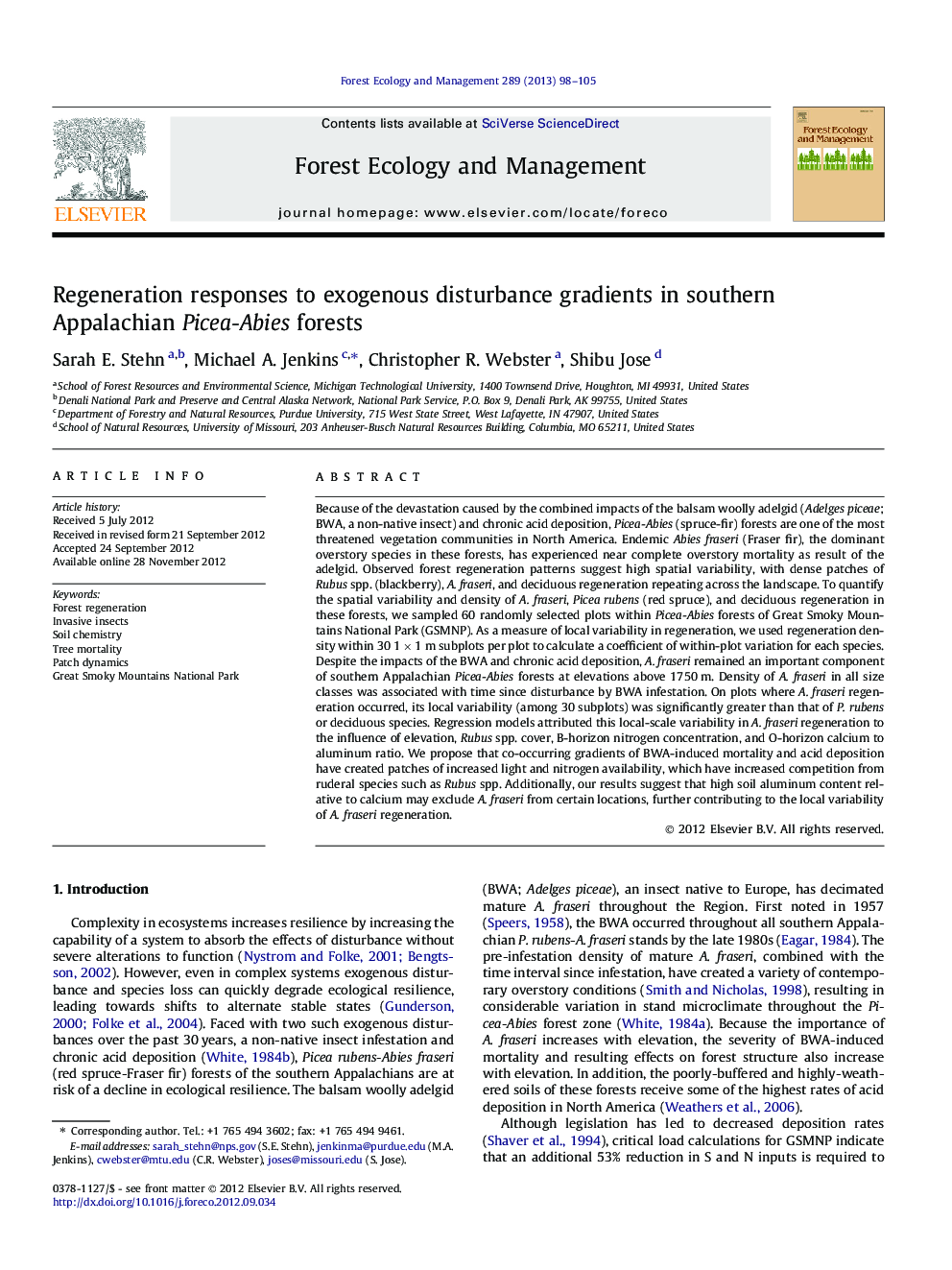| کد مقاله | کد نشریه | سال انتشار | مقاله انگلیسی | نسخه تمام متن |
|---|---|---|---|---|
| 86972 | 159226 | 2013 | 8 صفحه PDF | دانلود رایگان |

Because of the devastation caused by the combined impacts of the balsam woolly adelgid (Adelges piceae; BWA, a non-native insect) and chronic acid deposition, Picea-Abies (spruce-fir) forests are one of the most threatened vegetation communities in North America. Endemic Abies fraseri (Fraser fir), the dominant overstory species in these forests, has experienced near complete overstory mortality as result of the adelgid. Observed forest regeneration patterns suggest high spatial variability, with dense patches of Rubus spp. (blackberry), A. fraseri, and deciduous regeneration repeating across the landscape. To quantify the spatial variability and density of A. fraseri, Picea rubens (red spruce), and deciduous regeneration in these forests, we sampled 60 randomly selected plots within Picea-Abies forests of Great Smoky Mountains National Park (GSMNP). As a measure of local variability in regeneration, we used regeneration density within 30 1 × 1 m subplots per plot to calculate a coefficient of within-plot variation for each species. Despite the impacts of the BWA and chronic acid deposition, A. fraseri remained an important component of southern Appalachian Picea-Abies forests at elevations above 1750 m. Density of A. fraseri in all size classes was associated with time since disturbance by BWA infestation. On plots where A. fraseri regeneration occurred, its local variability (among 30 subplots) was significantly greater than that of P. rubens or deciduous species. Regression models attributed this local-scale variability in A. fraseri regeneration to the influence of elevation, Rubus spp. cover, B-horizon nitrogen concentration, and O-horizon calcium to aluminum ratio. We propose that co-occurring gradients of BWA-induced mortality and acid deposition have created patches of increased light and nitrogen availability, which have increased competition from ruderal species such as Rubus spp. Additionally, our results suggest that high soil aluminum content relative to calcium may exclude A. fraseri from certain locations, further contributing to the local variability of A. fraseri regeneration.
► We quantified the spatial variability of woody regeneration in Picea-Abies forests.
► Abies fraseri regeneration exhibited greater local variability than other species.
► Factors related to overstory mortality and soil acidity influenced variability.
► Low Ca:Al ratio may affect species regeneration and contribute to variability.
Journal: Forest Ecology and Management - Volume 289, 1 February 2013, Pages 98–105